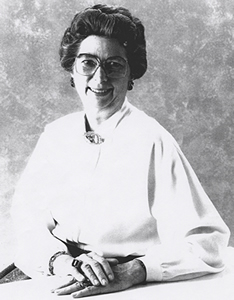
Overview
Judge Cynthia Holcomb Hall graduated from Stanford University in 1951 and received her Bachelor of Laws degree from Stanford Law School in 1954. She completed her Master of Laws at New York University in 1960, at which time she began work in the United States Department of Justice, where she remained until 1964, when she joined the United States Treasury Department. She left the Treasury Department in 1966 and became a partner in the practice Brawerman & Holcomb. In 1972 she was appointed to the United States Tax Court, upon which she sat until 1981, at which point she was appointed to the United States District Court for the Central District of California. She was appointed to the United States Court of Appeals for the Ninth Circuit in 1984 by President Ronald Reagan.
About the Transcript
In her interview, Judge Cynthia Holcomb Hall discusses her time at Stanford University, where she earned both her undergraduate and law degrees. She describes the value her father placed on her education, and her decision to enter law school, as well as the difficulties she faced in trying to enter a law firm following her graduation. She replaced the sole woman employed in the Tax Division of the Department of Justice, but never came before a female judge in the four years during which she litigated. Her appointment to the Tax Court in 1972 by President Nixon was part of Barbara Franklin’s effort to increase the number of women in high-level executive positions. She and her husband John became the first husband-and-wife team to work in the Executive Government, as he was hired by the Assistant Secretary of the Treasury at the same time. However, she says that what made her most attractive as a potential Presidential Appointee was her broad range of experience in various fields, not having been hired by a law firm after completing her law degree, and her previous work on all sides of various tax issues. She describes her feelings on the Presidential Appointments made during this era, calling them the beginning of progress for women in executive positions in government. She also discusses various cases she presided over and issues she encountered during her time as a federal judge.